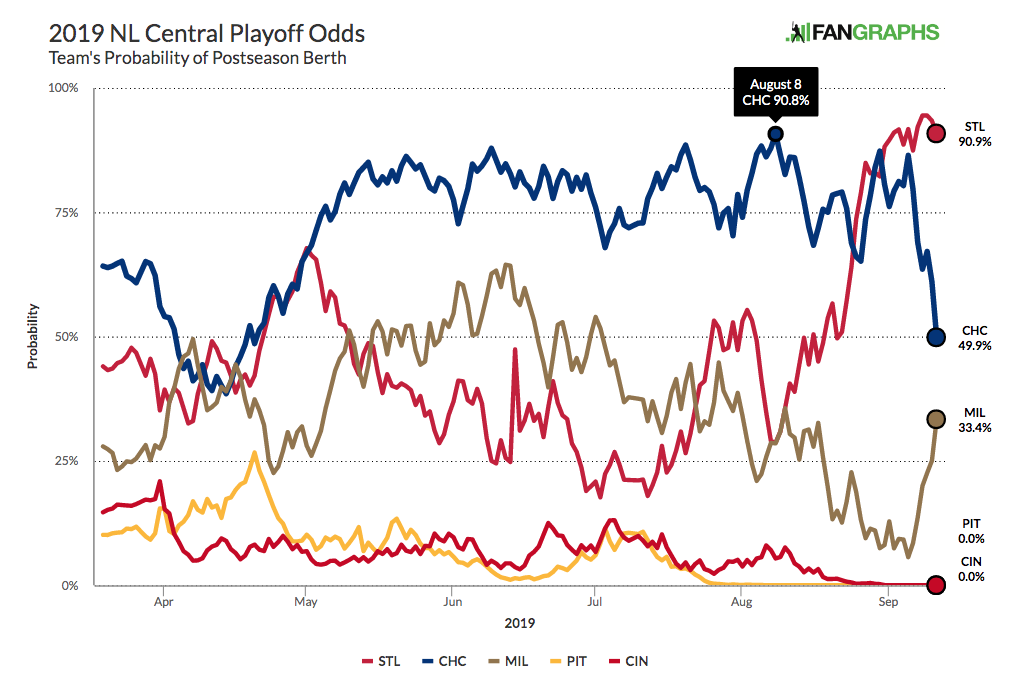Team Entropy 2019: Hanging In There
This is the second installment of this year’s Team Entropy series, my recurring look not only at the races for the remaining playoff spots but the potential for end-of-season chaos in the form of down-to-the-wire suspense and even tiebreakers. Ideally, we want more ties than the men’s department at Macy’s. If you’re new to this, please read the introduction here.
It’s been 12 days since I launched this year’s Team Entropy series, and I’m happy to report that for connoisseurs of chaos, the news is generally good, at least when it comes to the Wild Card races. The division races… eh, we’ve seen some tightening in both Centrals, but of greater significance are the pages torn off the calendar; there are but 16 days remaining in the regular season.
The Dodgers became the first team to clinch a division title this year, claiming their seventh straight NL flag on Tuesday, September 10. No other clinching is imminent, but by coincidence, the magic numbers for both East division leaders (the Yankees and Braves) and that of the AL West (the Astros) all stood at eight entering Thursday; the Yankees, with the sweep of their doubleheader against the Tigers and the Rays’ loss to the Rangers, cut theirs to five, though the other two remain at eight. It’s only a matter of time for them; there’s no reason to hold your breath in those races.
In the AL Central, the Twins — who since my last installment have lost both Michael Pineda and Byron Buxton for the season, the former to a drug suspension and the latter to shoulder surgery — have lost ground since the previous check-in. At 89-57, they now lead the Indians (86-61) by just 3 1/2 games, but with the shrinking schedule, their odds have only dropped by 0.6%, to 93.8%. The two teams face off for a three-game series this weekend in Cleveland, their last head-to-head matchup. The Indians lead the season series 9-7, and realistically probably need to sweep to keep things interesting given that they have the harder remaining schedule of the two (.487 vs. .443).
As for the NL Central, the Cardinals (82-64) have a four-game lead over both the Cubs and Brewers (78-68), each of whom has recently lost a key player for at least the remainder of the regular season, namely Javier Báez (fractured thumb) and Christian Yelich (fractured kneecap). Since reaching their season high-water mark in terms of leading the division (3 1/2 games on August 8), the Cubs are just 15-16, while the Cardinals are an NL-best 24-9 and the Brewers 18-12; the latter has won seven in a row despite the loss of the reigning NL MVP and a few other players. Since the previous Team Entropy installment, St. Louis’ odds to win the division have jumped a honkin’ 12.3%, to 76.7%, with the Cubs’ odds more than cut in half to 16.3% and the Brewers’ odds now visible to the naked eye at 7.0%. The Redbirds host the Brew Crew this weekend, and with a 9-7 series lead, need just one more win to clinch the upper hand. The odds of a season-ending tie atop the division, which would require a tiebreaker game, are at 10.1%, 0.4% higher than when we last checked in. Read the rest of this entry »

